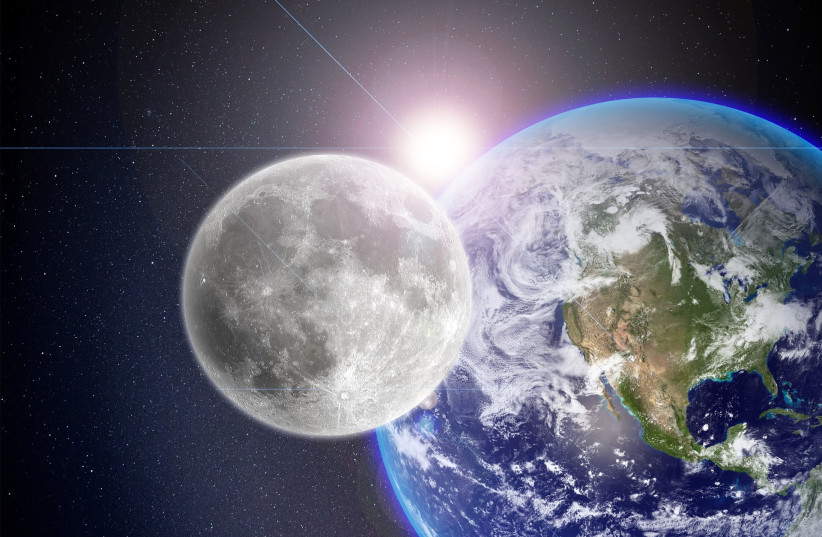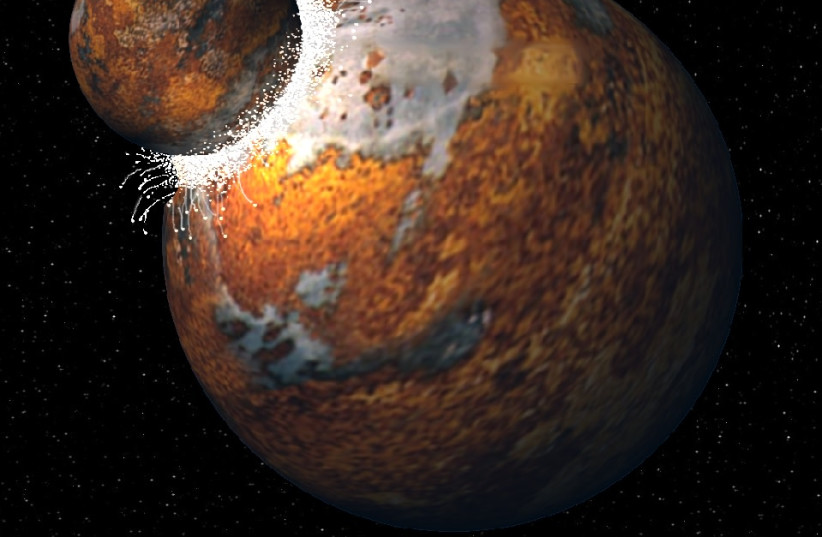Where on Earth did the Moon come from? As this latest scientific study suggests, that question may not be hyperbole.
This study, published in the peer-reviewed academic journal Science Advances, has managed to identify indigenous noble gases in the interior of the Moon, which must have come from the Earth's mantle.
The findings of this study lend further support to the "Giant Impact" theory of the Moon's creation and further sheds light on the origins of Earth's only natural satellite.
<br>Fly me to the Moon
Earth's Moon is among the most recognizable cosmic objects known to humanity, being a fixture of the night sky on a daily basis.
Its presence has seen it play important rules in humanity's cultural development from the dawn of our species and its notable effects on Earth's tides have been well-documented and studied.
Where did the Moon come from?
A few possible theories have been formed around this question, with three at one point being especially notable.

The first theory is capture theory, suggesting that the Moon was one of the many cosmic objects that formed in the solar system's early days, floating around in orbit until getting snared in the gravity of our planet.
Next was accretion theory. Essentially, the Earth was created along with the Moon in the early days of the solar system, gathering up more and more materials formed from the birth of the solar system in a process known as accretion.
But the last theory was the fission scenario, which posited that material from the Earth broke off due to the planet's fast rotation, and this broken portion of the Earth became the Moon.
However, each of these three has its problems. But another theory has since gained significant prominence and has become the dominant hypothesis in the greater scientific community.
This theory, called Giant Impact, alternatively called the Theia Impact, suggests that a young Earth collided with another planet, one approximately the size of Mars, some 4.5 billion years ago.

The collision of the Earth with this other planet, usually called Theia, resulted in the creation of a partially vaporized disk. Eventually, the matter in this disk would gather together through the process of accretion to form into what they are now.
So what evidence is supporting this theory?
NASA's Apollo missions to the Moon were able to recover a lot of rocks and soil to bring back to Earth, which showed significant chemical and isotopic similarities with Earth's own rocks and soil.
This latest study offers another piece of evidence: The presence of noble gases.
<br>What is a noble gas?
A noble gas is a specific set of elements that, under standard conditions, have very similar properties.
Specifically, they are colorless, odorless and have very low chemical reactivity.
There are six such naturally occurring noble gases: Xenon, krypton, argon, neon, helium and radon.
These can come from any number of places, but what if they were from parts of the Moon that had been protected from exposure to things like cosmic rays and solar wind?
<br>The Moon, meteorites and the Grateful Dead?
The study in question took a look at several meteorites collected by NASA that had crashed into Antarctica after originating from the Moon.
This in turn happened due to repeated asteroid impacts on the lunar surface.
The meteorites in question are basalt rock and lunar glass formed when magma from the inside of the Moon welled up and quickly cooled, becoming covered by more basalt layers and is therefore shielded from exposure to solar wind and cosmic rays.
The Moon is often struck by asteroid impacts since it lacks an atmosphere protecting it. A particularly powerful impact may have been enough to dislodge the meteorites in question from these layers and have them crash into Earth.
Researchers investigated through the use of Tom Dooley, an advanced noble gas mass spectrometer named after a Grateful Dead song of the same name.
This instrument is incredibly sensitive and was used to study the isometric signatures of noble gases spotted in the lunar glass in the meteorites.
What they found was that there was a much higher concentration of helium and neon than expected.
What does the presence of noble gases mean?
These gases, being located in levels of the Moon that couldn't have been exposed to solar wind or cosmic rays, must have come from somewhere.
The likely answer, the researchers argue, is that they came from the Earth.
Essentially, when the Theia impact happened, the Moon would have inherited these noble gases from the Earth.
After all, these gases are indigenous to our planet, so in theory, it is possible.
But this is a major step forward, with the researchers noting that a race to study noble gases in meteors is imminent. Specifically, there will be pushes to find other noble gases too, ones that are harder to detect.
